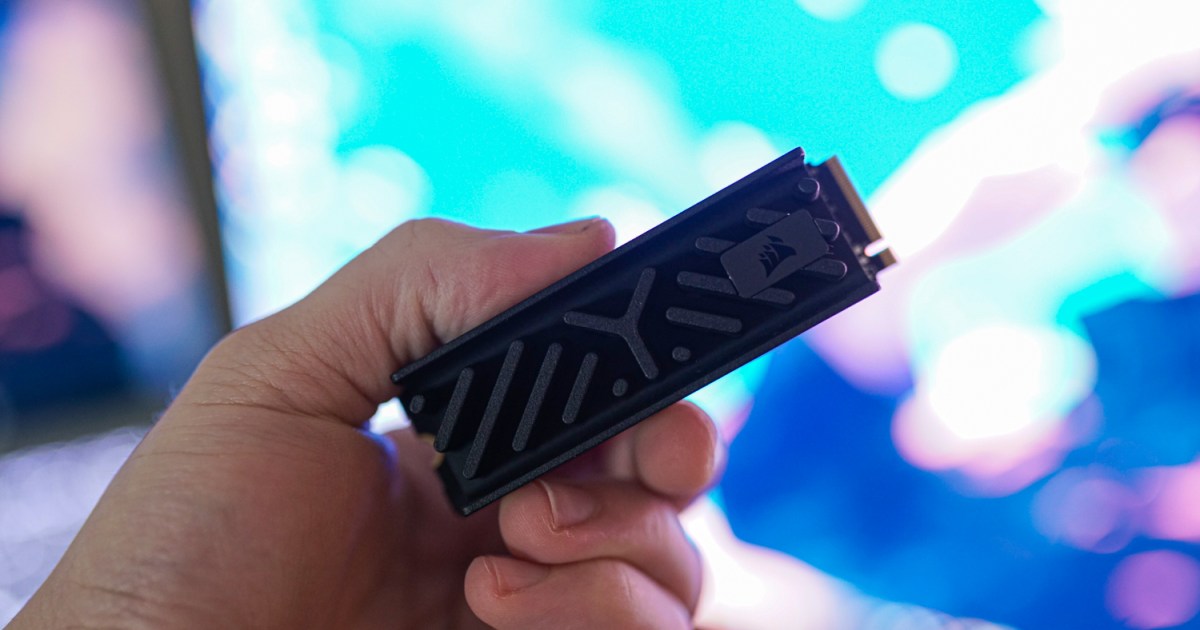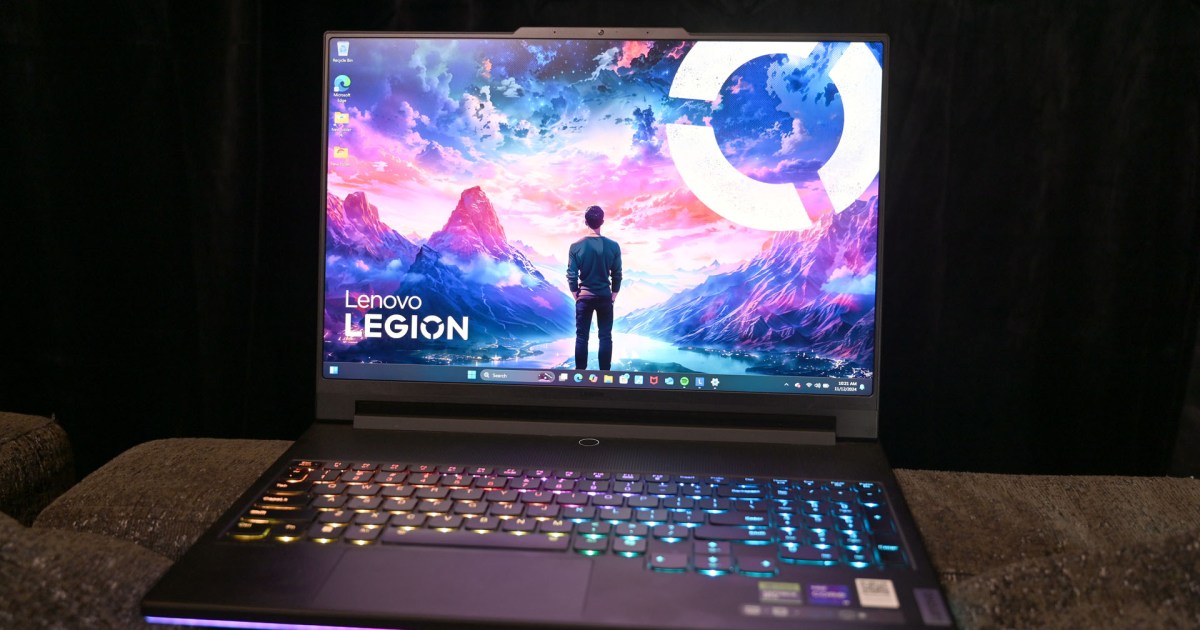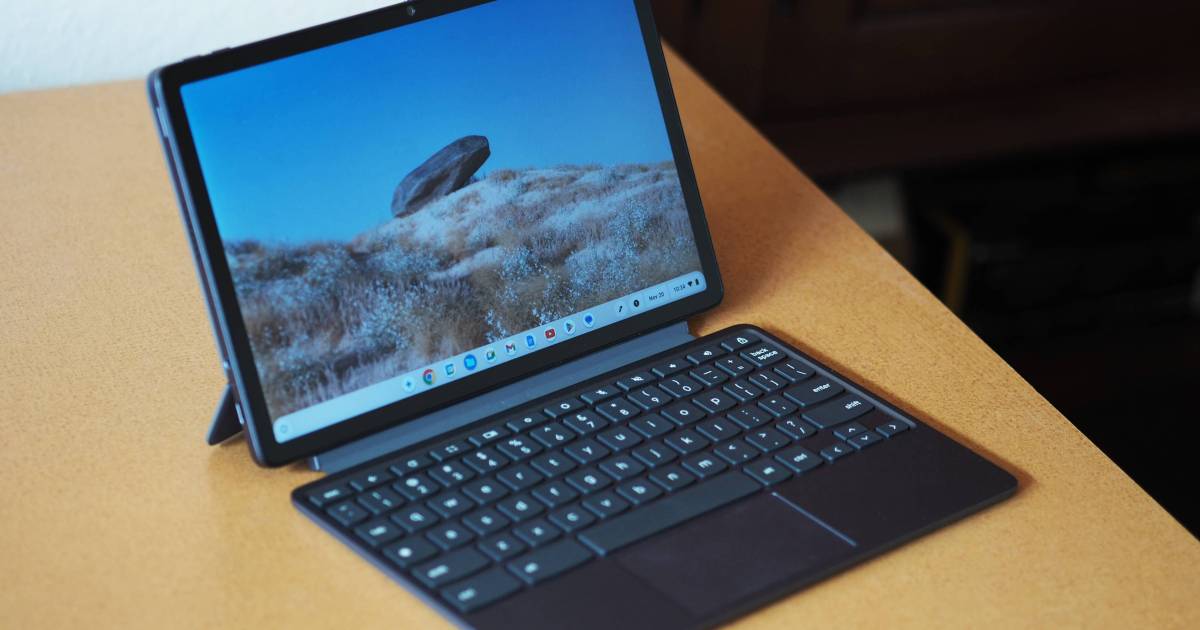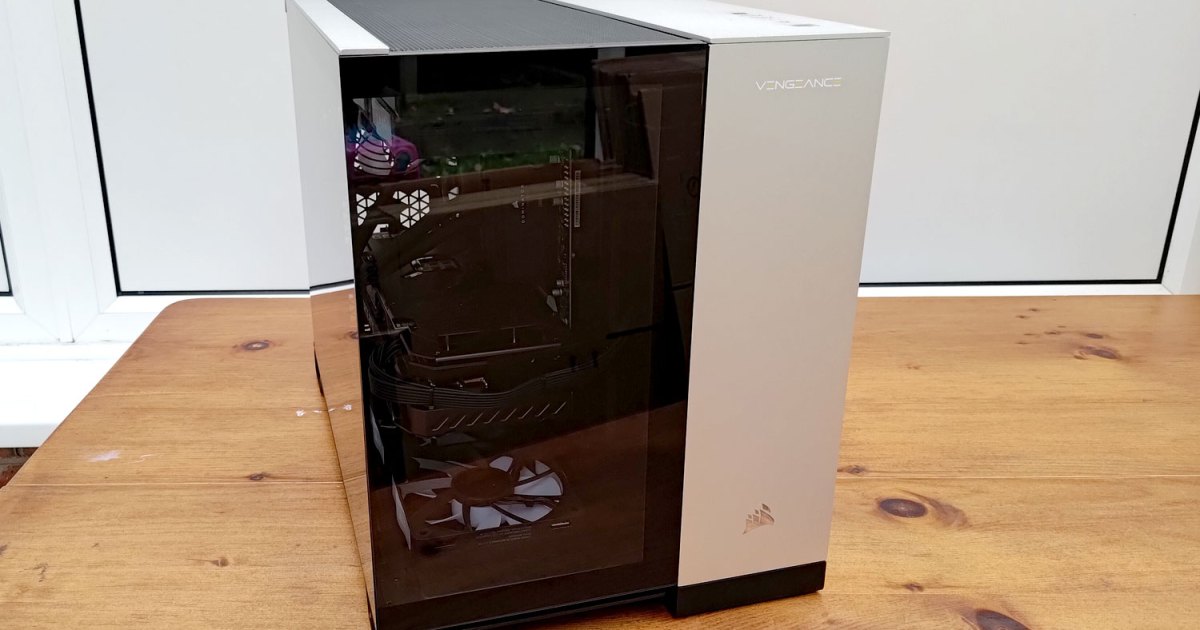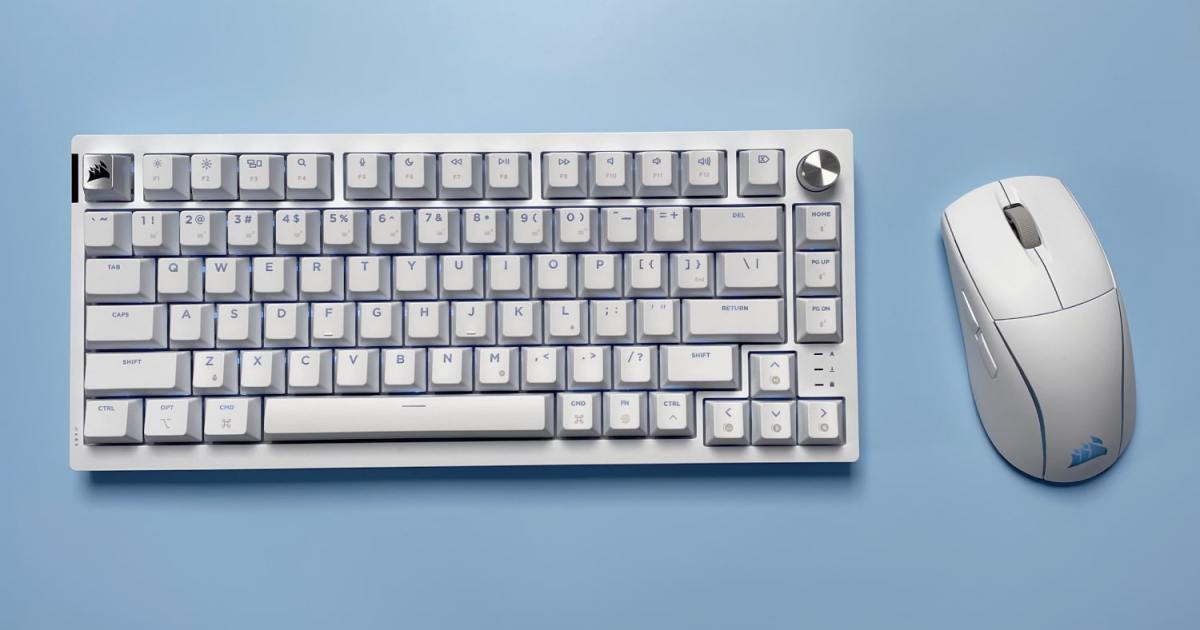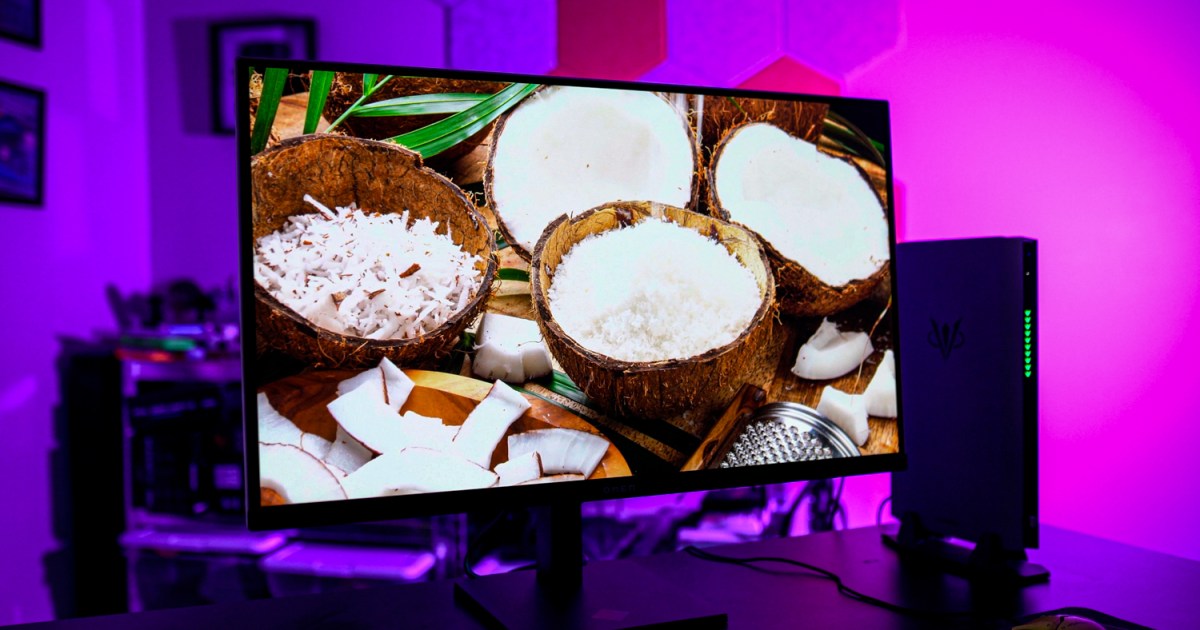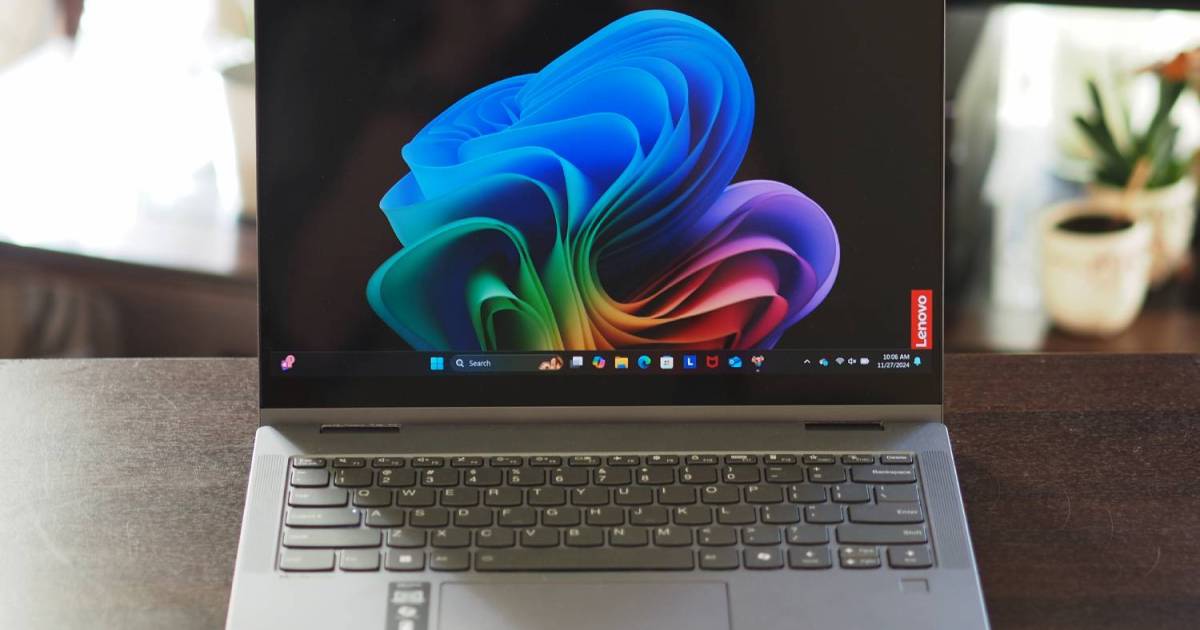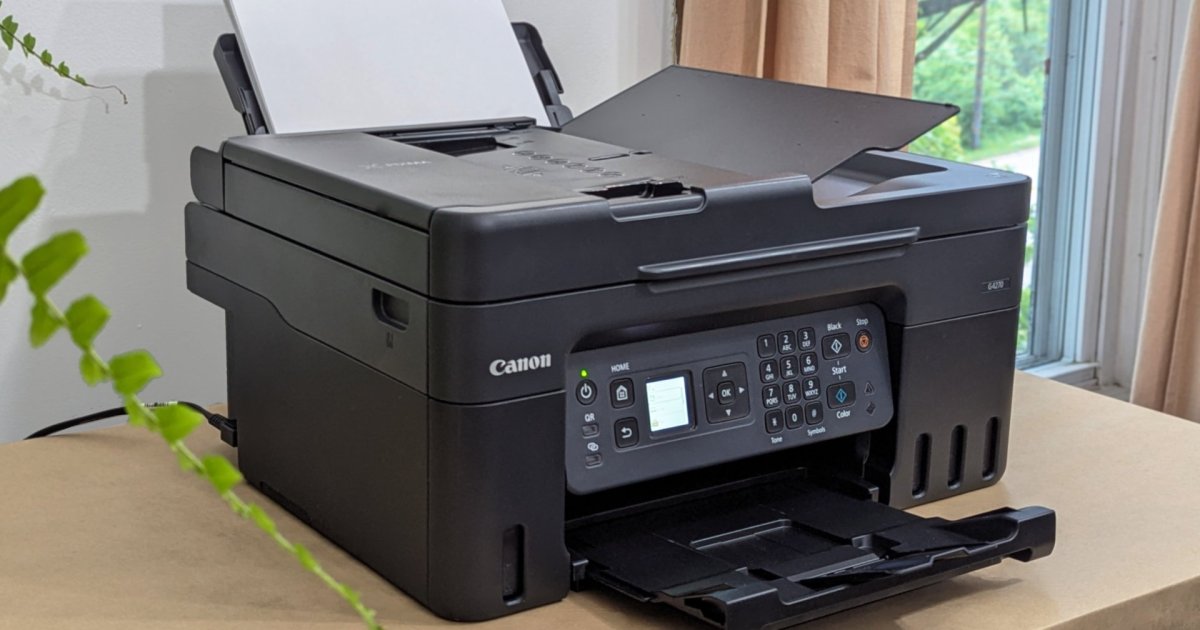Corsair aims to bring PCIe 5.0 storage to the mainstream with the MP700 Elite SSD. While high-performance PCIe 5.0 drives are readily available, few offer a more budget-friendly option by forgoing a dedicated DRAM cache. The Corsair MP700 Elite does just that, leveraging Host Memory Buffer (HMB) technology to achieve a substantial performance boost over DRAM-based PCIe 4.0 drives without a significant price increase. This review delves into its performance, features, and overall value.
While the MP700 Elite excels in sequential read and write benchmarks, it highlights the ongoing challenges of scaling PCIe 5.0 technology beyond 1TB capacities. Higher capacity PCIe 4.0 SSDs often offer comparable real-world performance at a lower cost. If you’re navigating the complexities of SSD specifications and PCIe generations, our comprehensive SSD buying guide can provide valuable insights.
Pricing and Specifications
| Feature | 1TB Model | 2TB Model |
|---|---|---|
| Sequential R/W | Up to 10,000/8,500 MB/s | Up to 10,000/8,500 MB/s |
| Random R/W | Up to 1.3M/1.4M IOPS | Up to 1.3M/1.4M IOPS |
| Cache | HMB | HMB |
| Memory | Kioxia BiCS 8 TLC | Kioxia BiCS 8 TLC |
| Interface | PCIe Gen 5.0 x4 | PCIe Gen 5.0 x4 |
| Form Factor | M.2 2280 | M.2 2280 |
| Power Consumption | 5.9W | 5.9W |
| Dimensions | 80x22x2mm (80x24x9mm w/ heatsink) | 80x22x2mm (80x24x9mm w/ heatsink) |
| Price | $150 ($160 w/ heatsink) | $260 ($270 w/ heatsink) |
Corsair offers the MP700 Elite in 1TB and 2TB variants, both with and without a heatsink. It’s important to distinguish this drive from the discontinued MP700 and the still-available MP700 Pro and MP700 Pro SE. Despite the naming convention, the MP700 Elite is not a direct successor to the MP700 Pro, offering slightly lower performance.
The key differentiators between the MP700 Elite and its predecessors are the new Kioxia memory modules, a new Phison controller, and the DRAM-less design. Unlike the MP700 Pro line, which boasts a 2GB DRAM cache per terabyte, the MP700 Elite utilizes HMB, borrowing system memory for caching purposes. This design choice reduces cost, making the MP700 Elite approximately $40 cheaper at 1TB and $65 cheaper at 2TB compared to the Pro models.
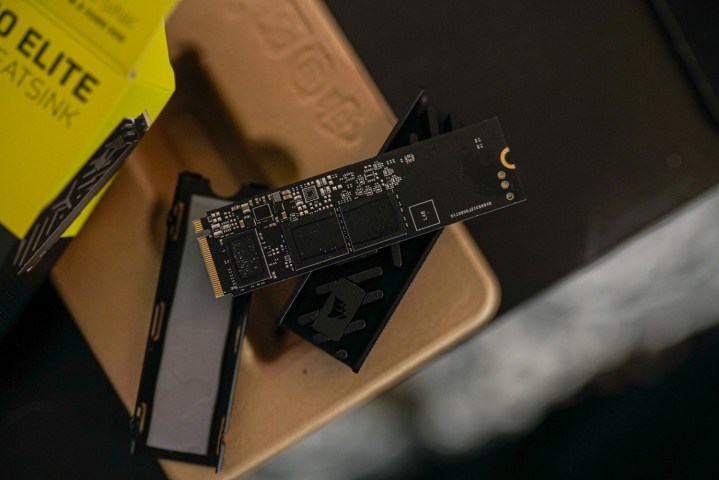 The Corsair MP700 Elite SSD without its heatsink.
The Corsair MP700 Elite SSD without its heatsink.
At $150, the 1TB MP700 Elite offers competitive pricing for a PCIe 5.0 SSD, particularly when compared to the $130 Samsung 990 Pro, a PCIe 4.0 drive. However, the 2TB MP700 Elite is priced significantly higher than the 990 Pro, demonstrating the persistent price scaling challenges of PCIe 5.0 technology. This positions the MP700 Elite in a unique segment. The 1TB model provides a viable alternative to PCIe 4.0 SSDs like the 990 Pro or WD Black SN850X, while the 2TB model struggles to justify its higher price against PCIe 4.0 competitors. Its performance falls between high-end PCIe 5.0 drives like the Sabrent Rocket 5 and Crucial T705, which boast speeds up to 14,000MB/s, and its PCIe 4.0 counterparts. This forces a choice between speed and capacity, a dilemma common with many PCIe 5.0 drives but particularly pronounced with the MP700 Elite.
Software and Features
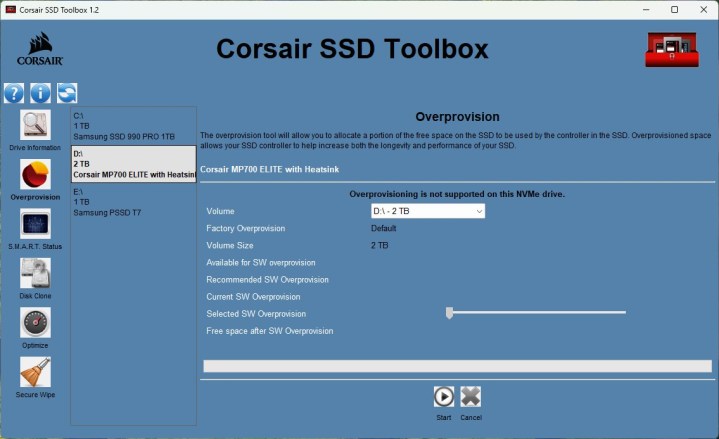 Corsair SSD Toolbox software
Corsair SSD Toolbox software
Corsair’s SSD Toolbox manages the MP700 Elite, providing features such as manual over-provisioning, TRIM optimization, drive cloning, and secure erase functionality. While functionally sound, the SSD Toolbox interface appears dated. Its aesthetic feels reminiscent of older operating systems, contrasting with the modern hardware it manages.
Beyond installing the SSD Toolbox, optimizing performance for the MP700 Elite requires enabling write-cache buffer flushing within Windows Device Manager, a necessary step due to the HMB design.
Performance Analysis
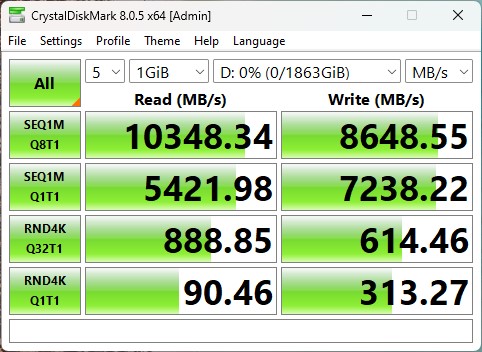 CrystalDiskMark benchmark results
CrystalDiskMark benchmark results
CrystalDiskMark benchmarks reveal the MP700 Elite exceeding its advertised sequential read and write speeds. However, random read and write performance lags, delivering speeds comparable to high-performing PCIe 4.0 drives due to the HMB implementation.
The MP700 Elite’s strength lies in large sequential file transfers. The AJA Video Systems test demonstrates significant write speed improvements over the 990 Pro and nearly double the performance of the larger capacity WD Blue SN5000.
| Benchmark | Corsair MP700 Elite 2TB w/ Heatsink | Samsung 990 Pro 2TB w/ Heatsink | WD Blue SN5000 4TB |
|---|---|---|---|
| AJA Video Systems (Read/Write) | 7,690 / 6,240 MB/s | 6,090 / 5,994 MB/s | 4,353 / 4,589 MB/s |
| PCMark 10 Storage | 4,211 | 3,677 | 3,523 |
| 3DMark Storage | 3,922 | 3,372 | 3,621 |
| Final Fantasy XIV Dawntrail (seconds) | 6.73 seconds | 7.59 seconds | 7.11 seconds |
These advantages are mirrored in PCMark 10, albeit with smaller margins due to the lower random read/write speeds. Gaming benchmarks reveal interesting results. While the MP700 Elite exhibits faster loading times in both Final Fantasy XIV and 3DMark, the improvements are modest. The gains, while measurable, might not justify the price premium over a fast PCIe 4.0 drive, especially with DirectStorage technology now available on both PCIe 4.0 and 5.0 SSDs.
Should You Buy the Corsair MP700 Elite?
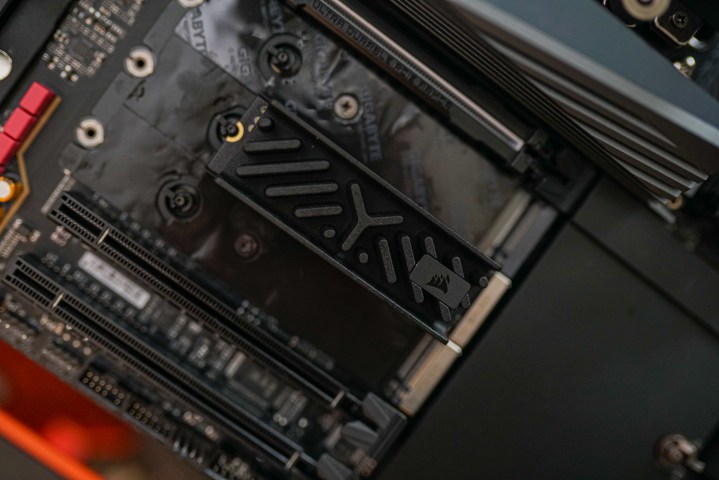 Corsair MP700 Elite installed in a motherboard
Corsair MP700 Elite installed in a motherboard
The Corsair MP700 Elite makes PCIe 5.0 storage more accessible, rivaling the price of high-performance PCIe 4.0 options. However, its value proposition is strongest in the 1TB configuration, particularly for users frequently transferring large files. Gamers will see marginal performance gains, but the increased cost might be unnecessary. The 2TB model’s price makes it less attractive compared to significantly cheaper and comparably performing PCIe 4.0 alternatives.
Regarding the heatsink, the standard model offers better value. The heatsink’s added bulk can hinder installation in compact systems and laptops, while its benefits are wasted in consoles like the PS5.
Despite some drawbacks, the MP700 Elite remains a drive to watch. Future price reductions, especially during sales periods, could make it highly compelling, particularly the 2TB model.



